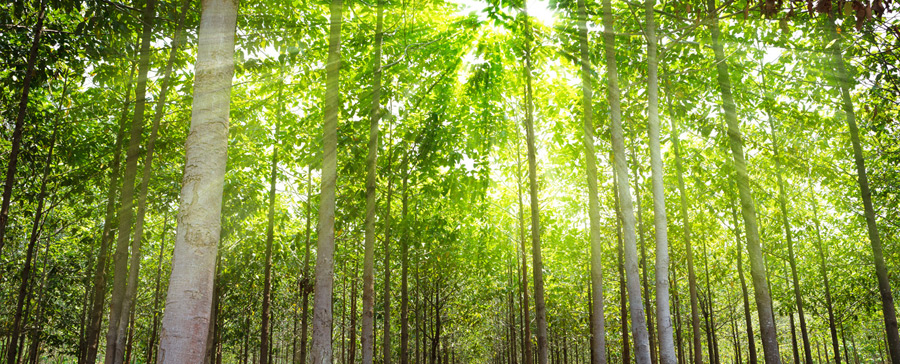Teak trees (Tectona Grandis) are large, tropical hardwood trees native to south and Southeast Asia including India, Burma, Malaysia and Thailand. Teak is thought to have been introduced from India to Indonesia in the second century.
A deciduous species that can grow up to 40m tall, teak trees feature grey-brown branches, paper-like leaves and produces fragrant white flowers between June and August, before setting globe-shaped fruit from September to December.
Its natural oils makes teak an extremely durable timber that has become much sought after around the globe for a variety of purposes, including outdoor furniture.
Whilst the harvesting of teak once raised environmental concerns about the loss of old-growth forests, today the vast majority of teak is grown in Government-controlled teak plantations. Jati’s teak is sourced from one such plantation on the Indonesian island of East Java. The plantation is controlled by Perum Perhutani, a state-owned forest enterprise that manages the country’s plantations.
Once grown from seed, today plantation teak is grown from cuttings taken from exemplary trees which are propagated to produce straight, healthy trees that can take up to 30 years to grow to maturity.
Once harvested, the teak is milled and emits a leather-like smell. Cut timber is then dried inside drying chambers until water content is reduced to 12%. Premium grade teak, as used in all Jati outdoor furniture, features a high oil content, high tensile strength and tight grain.
A further indication of premium teak outdoor furniture is the type of joints in evidence. Jati uses only mortise and tenon joints that are held together with high quality glue and teak dowels. Mitred joins are strengthened with thick aluminium supports.
Finally, Jati teak furniture is twice-sanded before being buffed to achieve the silky finish for which Jati teak outdoor furniture is famous.

